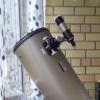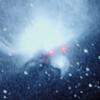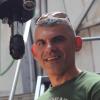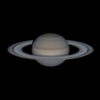
Photographing the Sun
Started by
akoroves
, Apr 27 2013 05:48 PM
5 replies to this topic
#1

Posted 27 April 2013 - 05:48 PM
I was wondering if someone could help me. I would like to photograph the sun with my unmodded Canon 1000D. Can I buy a 2 inch H-Alpha filter and use this alone to make it safe to image the sun or do I need another special filter. What I want is an inexpensive way to capture sun spots and granules on my dlsr. Does such a way exist?
Thanks in advance for the advice.
Thanks in advance for the advice.
#2

Posted 27 April 2013 - 06:09 PM
No... Do not use a Ha filter alone...
You need an energy absorbing filter otherwise you will destroy the sensor in your camera...
I recommend the Thousand Oaks Solar filter, they make both glass and plastic film Solar filters in a size that will fit you camera.
You can find information here:
http://www.thousando....com/solar.html
You need an energy absorbing filter otherwise you will destroy the sensor in your camera...
I recommend the Thousand Oaks Solar filter, they make both glass and plastic film Solar filters in a size that will fit you camera.
You can find information here:
http://www.thousando....com/solar.html
#3

Posted 27 April 2013 - 06:11 PM
No. Very dangerous to try......
There are two kinds of H alpha filters in common use. One is for deep space imaging, and the other is for solar imaging. THey are completely different animals. The only thing they have in common is the name, and that they both let through only Hydrogen Alpha light, a specific band of light.
You are suggesting popping one of the two inch nighttime deep space filters into the light path. That is not safe.
THe Hydrogen ALpha made for deep sky lets in all of the hygrogen alpha light, with efficiencies reaching well above 90 per cent. This would destroy a sensor, and blind a human eyeball. It is safe only for non-solar use.
Solar hydrogen alpha filters made by the likes of Coronado, Lunt, Daystar, and others, use a wholly different technology (actually technologies, plural) to reject all but a hundred-thousandth or less of the total light coming in, and then choose only that at the hydrogen alpha wavelength.
If you want sunspots, invest in a piece of Baader Astro Solar film (About $35 for a 1o by 10 inch sheet). Make a holder for it, and put it in front of your telescope. It will show sunspots, but not much in the way of surface detail, and no prominences.
Alex
There are two kinds of H alpha filters in common use. One is for deep space imaging, and the other is for solar imaging. THey are completely different animals. The only thing they have in common is the name, and that they both let through only Hydrogen Alpha light, a specific band of light.
You are suggesting popping one of the two inch nighttime deep space filters into the light path. That is not safe.
THe Hydrogen ALpha made for deep sky lets in all of the hygrogen alpha light, with efficiencies reaching well above 90 per cent. This would destroy a sensor, and blind a human eyeball. It is safe only for non-solar use.
Solar hydrogen alpha filters made by the likes of Coronado, Lunt, Daystar, and others, use a wholly different technology (actually technologies, plural) to reject all but a hundred-thousandth or less of the total light coming in, and then choose only that at the hydrogen alpha wavelength.
If you want sunspots, invest in a piece of Baader Astro Solar film (About $35 for a 1o by 10 inch sheet). Make a holder for it, and put it in front of your telescope. It will show sunspots, but not much in the way of surface detail, and no prominences.
Alex
#4

Posted 27 April 2013 - 06:26 PM
Alex,
Solar viewing and photography is a fascinating and enjoyable branch of astronomy. It has its own perils and fortunes, as does many other aspects of the hobby, not the least of which is safety. Solar observation is the only astronomical activity where a danger does exist in its execution. That said, with proper precautions it can be loads of fun!
So let's start by answering your question. An H-alpha filter suchlike as those used for better definition of nighttime objects CANNOT BE USED in solar activity. The provide filtering is insufficient by over 4 orders of magnitude; don't even consider it!
If your desire is to photograph sunspots and solar granulation, you will need to have:
-- A white-light solar filter with a minimum Neutral Density ("ND") of at least 4 (for photography) or 5 (for direct observation). This may take the form of a thin Mylar sheet or a piece of glass, either of which is produced and treated with materials to meet the minimum ND requirement.
-- A minimum of 80mm effective aperture. This value is recommended but not a hard-and-fast rule. The physics of optics governs this limit; the solar granulation is has cells that are about 500-1000 km across and cannot be resolved from 150,000,000 km away unless the aperture is above the Dawes Limit.
If you want to have a go at narrowband imaging, prepare to bring more money to the table. Thousands if us are doing it but beware: it's very addictive once to taste it!!
Feel free to list other questions. You won't find a more knowledgable bunch than here at CN.
Regards, Marc
Solar viewing and photography is a fascinating and enjoyable branch of astronomy. It has its own perils and fortunes, as does many other aspects of the hobby, not the least of which is safety. Solar observation is the only astronomical activity where a danger does exist in its execution. That said, with proper precautions it can be loads of fun!
So let's start by answering your question. An H-alpha filter suchlike as those used for better definition of nighttime objects CANNOT BE USED in solar activity. The provide filtering is insufficient by over 4 orders of magnitude; don't even consider it!
If your desire is to photograph sunspots and solar granulation, you will need to have:
-- A white-light solar filter with a minimum Neutral Density ("ND") of at least 4 (for photography) or 5 (for direct observation). This may take the form of a thin Mylar sheet or a piece of glass, either of which is produced and treated with materials to meet the minimum ND requirement.
-- A minimum of 80mm effective aperture. This value is recommended but not a hard-and-fast rule. The physics of optics governs this limit; the solar granulation is has cells that are about 500-1000 km across and cannot be resolved from 150,000,000 km away unless the aperture is above the Dawes Limit.
If you want to have a go at narrowband imaging, prepare to bring more money to the table. Thousands if us are doing it but beware: it's very addictive once to taste it!!
Feel free to list other questions. You won't find a more knowledgable bunch than here at CN.
Regards, Marc
#5

Posted 27 April 2013 - 07:05 PM
Guys,
Thanks so much. I really appreciate your advice. I will try to get a filter especially designed for solar imaging.
Thanks so much. I really appreciate your advice. I will try to get a filter especially designed for solar imaging.
#6

Posted 27 April 2013 - 10:38 PM
I'm going to quibble with the minimum size of Objective to resolve Granularity, but other than that your advice is right on.
Another Solar Observer...
To the OP. PLEASE do not try to cut corners with Solar Observing.
Another Solar Observer...
To the OP. PLEASE do not try to cut corners with Solar Observing.






















